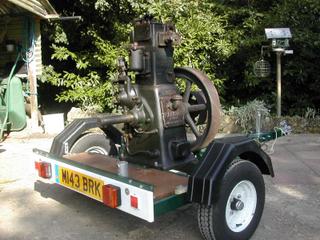
Since starting my e-Plan diet last week, I have managed to cut my electricity consumption by 40%, and still continue to use the high wattage appliances such as the washing machine and the dishwasher occasionally through the week.
The fridge and freezer are permanently plugged into a Wattmeter (5 quid from Lidl's).
I have cut my daily consumption down from 10kWh to only 6kWh, saving over £2 per week in bills. To celebrate, I will go and have a pint of Guinness at Weatherspoons with my new found wealth!
The washing machine is used on sunny mornings, when I know I am going to be able to get clothes dried outside on the line. It uses about 0.42kWh for a typical wash. The dishwasher is rationed to once every 3 or 4 days when we can justify the 1kWh it consumes for a typical wash cycle.
I have found the correct power settings for my desktop PC so that it powers down after 20 minutes of inactivity and then the whole stack consumes just 23W. This is better than the 150W that it was previously using when left on.
I have purchased low energy lightbulbs from Asda, for £1.97 for an 18W bulb that provides the same light output as a 100W incandescent bulb. These bulbs generally have paid for themselves within 300 hours of usage.
I have encouraged Elaine to turn off the TV and set top box at night which saves about another 0.25kWh, and I am being conservative with the use of the desktop PC, and use the laptop whenever I can.
If every home in the UK saved 40% on their electricity consumption, think of the gas and coal that could be saved each year.
Remember that you need to burn about 3kWh of gas at the power station for every 1kWh consumed in the home.
So with this in mind, the 28kWh of electricity I save in one week, saves enough gas to heat my home for a typical winter's day. So my 40% electricity saving could be thought of as a 14% (1 day in 7) indirect saving in my gas consumption - before I even touch the thermostat.
And yet, I don't appear to be "shivering in the dark" - a phrase adopted by those who scorn the idea of domestic enegy saving!
I would be interested in hearing from others who have managed similar savings.



